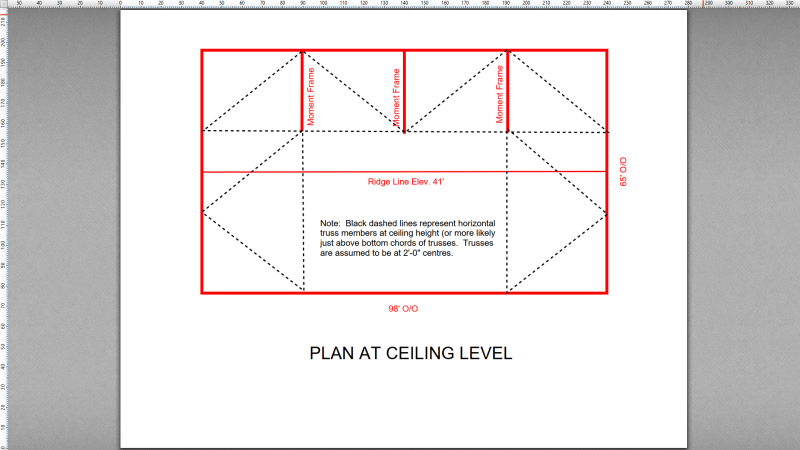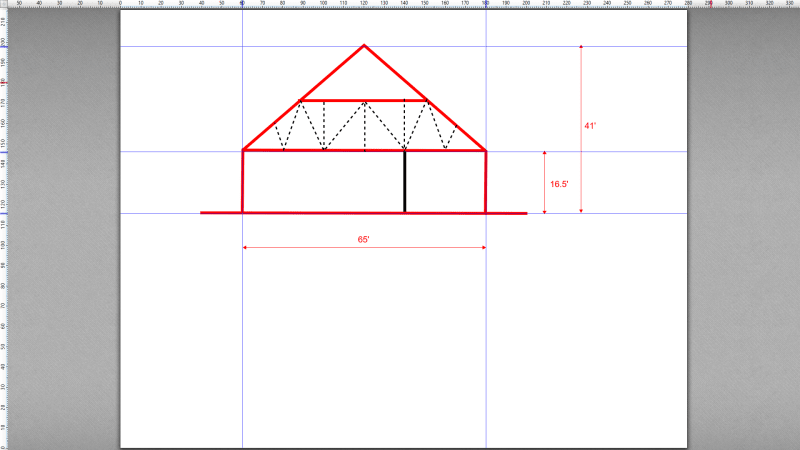Hello, new here but love the topics
I have a 98' wide x 65' deep municipality building with 16.5' wall heights and a 41' tall ridge line. simple gable roof spanning 65 ft with the trusses spliced 2/3 depth over steel beams. I have 20.5' long moment frames located at 1/4 points that are parallel to the trusses and situated in the back third of the 65' deep building.
I want to use the ceiling that attaches to the bottom chord of the roof trusses as a lateral diaphragm and then transfer that lateral load to the 4 moment frames and the two gable ends. the ceiling will be 5/8" drywall. I have about 550 plf of wind horizontally along the top of the stud framed exterior wall.
my questions are:
1. how do I design the 5/8" drywall ceiling as a diaphragm?
2. I know the spacing of my moment frames so I can tell you it is about 13k of lateral per frame which is 20.5' long = roughly 1200 plf that I need to transfer from the diaphragm into the top of the frame. How is the connection accomplished?
3. same thing on the gable end, but with less lateral into the gable end shear wall. how is the roof diaphragm attachment (5/8" drywall ceiling) attached to the gable end wall?
thanks for all the help
I have a 98' wide x 65' deep municipality building with 16.5' wall heights and a 41' tall ridge line. simple gable roof spanning 65 ft with the trusses spliced 2/3 depth over steel beams. I have 20.5' long moment frames located at 1/4 points that are parallel to the trusses and situated in the back third of the 65' deep building.
I want to use the ceiling that attaches to the bottom chord of the roof trusses as a lateral diaphragm and then transfer that lateral load to the 4 moment frames and the two gable ends. the ceiling will be 5/8" drywall. I have about 550 plf of wind horizontally along the top of the stud framed exterior wall.
my questions are:
1. how do I design the 5/8" drywall ceiling as a diaphragm?
2. I know the spacing of my moment frames so I can tell you it is about 13k of lateral per frame which is 20.5' long = roughly 1200 plf that I need to transfer from the diaphragm into the top of the frame. How is the connection accomplished?
3. same thing on the gable end, but with less lateral into the gable end shear wall. how is the roof diaphragm attachment (5/8" drywall ceiling) attached to the gable end wall?
thanks for all the help


